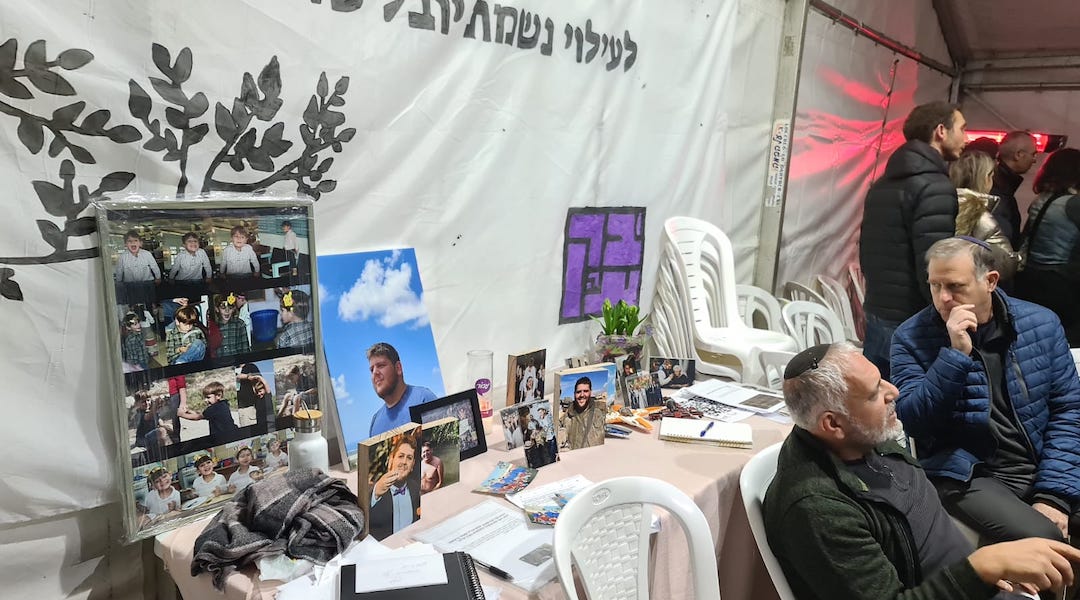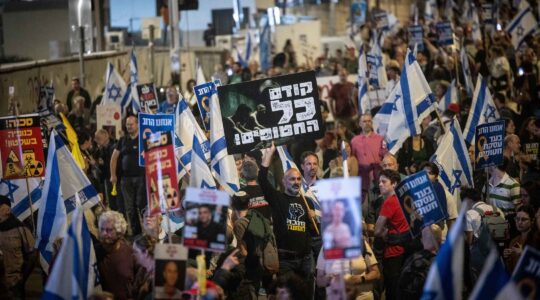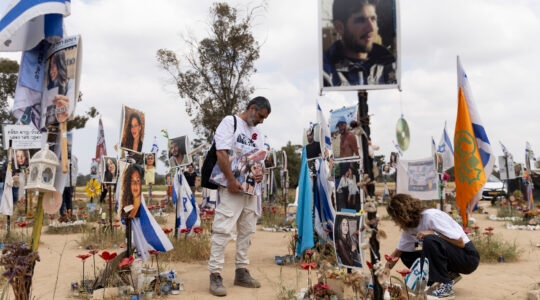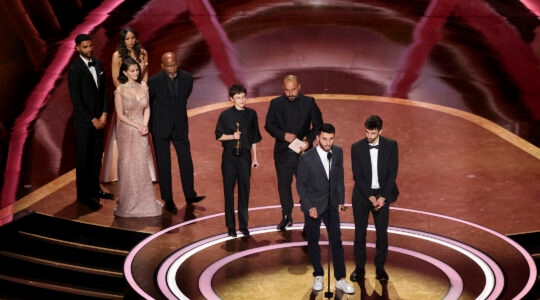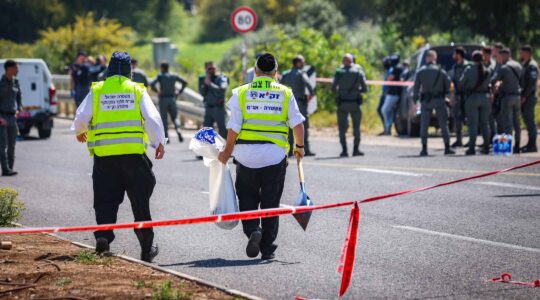JERUSALEM — On the final night of shiva for Yuval Shoham, an Israeli soldier killed in Gaza last month, the atmosphere felt strangely lively.
Groups of people gathered in clusters chatting animatedly around the family — Yuval’s parents and four brothers — under a large tent set up around the corner from their congregation in south Jerusalem’s Baka neighborhood. It was a Saturday night, and the crowd was busy swapping cheerful stories about Shoham, who was 22 when he died.
If it felt like a high school reunion, that’s because, in a sense, it was. Shoham, the 394th Israeli soldier to be killed in Gaza during this war, was also the 10th alumnus of Himmelfarb High School to fall in battle or in captivity since Oct. 7, 2023. The casualties range from young soldiers to a beloved teacher to the most well known Israeli hostage to be held by Hamas, Hersh Goldberg-Polin.
“There was a point where we were all like, OK, who’s it going to be this week?” said Yishai Reich, whose brother, Ariel, was the second Himmelfarb graduate to be killed. The deaths, Reich said, are a testament to the school’s ethos of service, and its tight Jerusalem community.
“Everyone loves everyone there,” said Reich, who himself will enter the army shortly. “They drill into us that studies and grades aren’t the most important thing — being a good person is. Maybe that’s why so many good soldiers come out of there.”
Now, with the war in the midst of a truce that will last at least six weeks, a battered nation is gaining a new vantage point from which to reflect on its losses. And those felt at Himmelfarb, founded a century ago and now serving a student body of about 900 boys from seventh to 12th grade, are particularly intense, with ramifications for the rest of Israel.
Himmelfarb is among the most prominent religious Zionist schools in the country. Its roster of alumni ranges from Herzi Halevi, the outgoing chief of Israel’s military, to leading journalists, rabbis and businessmen.
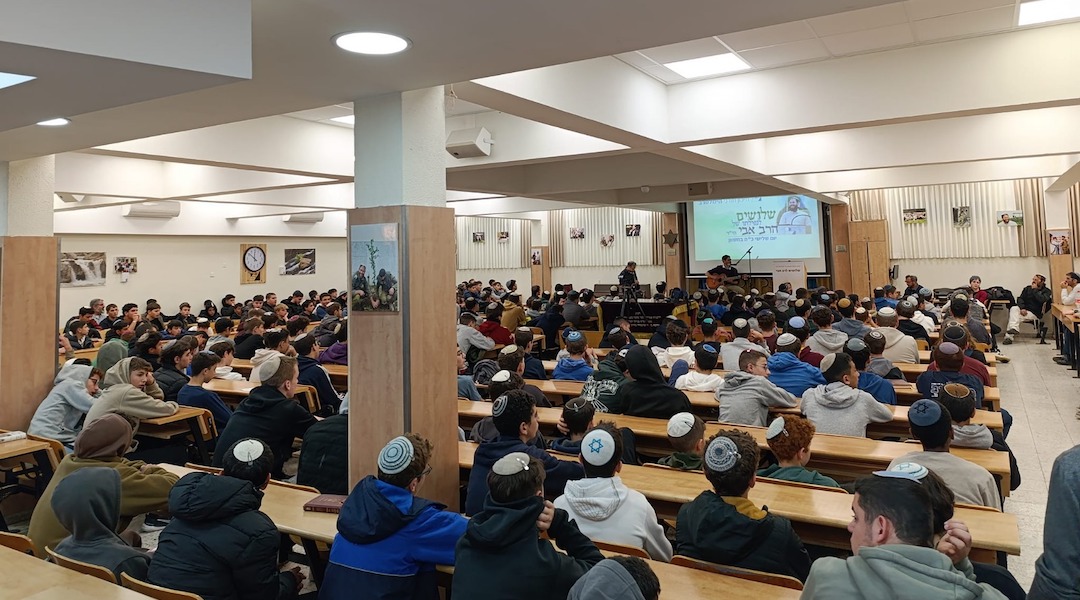
A Himmelfarb assembly marking the end of the 30-day mourning period for Rabbi Avi Goldberg, who graduated from the school and returned to teach at it. (Courtesy of Himmelfarb)
It also occupies a unique place among the 10% or so of Israelis who identify as religious Zionist — a typically modern Orthodox community that, in its fealty to Jewish law as well as the Jewish state, has historically seen itself as a bridge between Israel’s secular Jews and the strict religious observance of the haredi Orthodox. The school’s location in Jerusalem means that it serves a relatively diverse student body, and has striven to maintain the religious Zionist bridge-building ethos even as other segments of the community have moved further right.
The losses Himmelfarb has suffered accentuate what Yair Ettinger, a former student at the school who is a leading Israeli religion journalist, calls the “heavy, heavy price” religious Zionists have paid in blood during Israel’s multifront war. But at a time when Israeli society is exhausted and riven by conflicts foreign and domestic, Eittinger and others in the school’s orbit said its drive to bind the country together has grown only stronger.
“People are really thirsting, trying to get some comfort or reconciliation in Israeli society,” said Ettinger, author of “Frayed: The Disputes Unraveling Religious Zionists.” “And when they look at religious Zionists during the war fighting alongside secular people, they say, ‘This is something we used to know. Maybe this is something we can rebuild.’”
He went on, “And I think in that sense, people are saying, ‘Himmelfarb is the kind of bridge that we can build on.’”
Still, the cascade of deaths has created some dismal rituals among the school’s alumni and parents. Every time Ariella Bernstein has seen the words “cleared for publication” — which, in the Israeli press, precedes the announcement of casualties — she has rushed to check her son’s Himmelfarb yearbook to see if the name matches anyone in its pages.
And when, at Shoham’s funeral, his father Effie said he had “been writing this eulogy in my head for 15 months,” since the beginning of the war, it resonated with Bernstein.
Her son Benjy, who graduated from Himmelfarb, has served 227 days of reserve duty during the war. Prior to the ceasefire deal, he was set to return to Gaza for another four months in March; it’s unclear where the war will stand by then.
“Effie had the strength and the capacity to say what I couldn’t say out loud. That yes, he’s been planning this in his head for 15 months,” she said. “I told my husband, ‘You see, I’m not the only one.’”
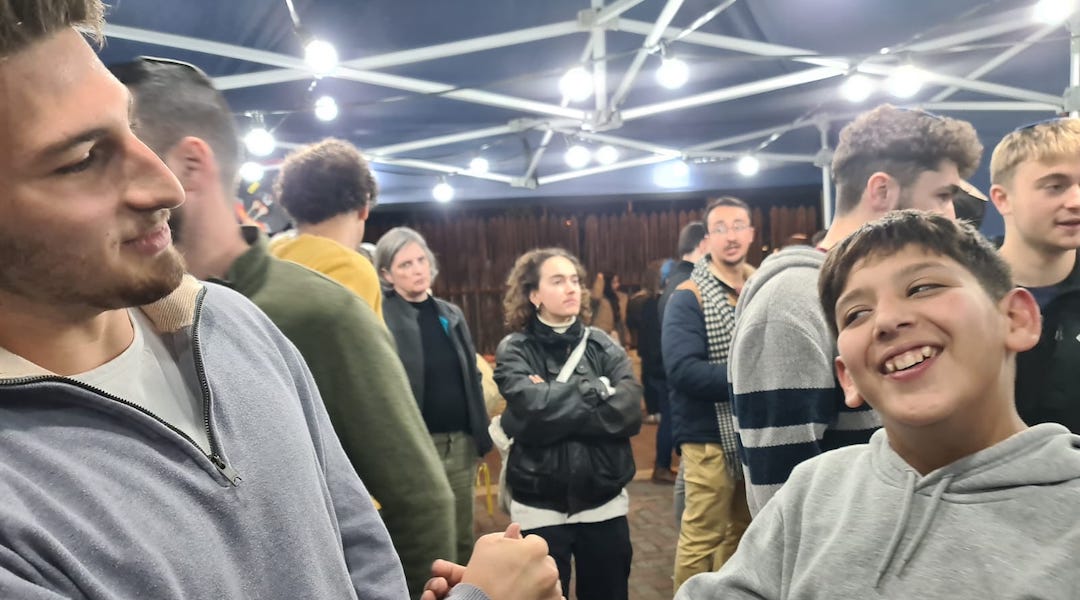
Himmelfarb alum Yoel Rockman greets Shaked Shoham, Yuval’s brother, at the shiva. (Deborah Danan)
Bernstein lives in Baka, the same Jerusalem neighborhood as the Goldberg-Polins and Shoham family. Effie Shoham and his wife, Oshrat — an attorney who also taught sex education classes at Himmelfarb — are founders of the Hakhel synagogue, where the Goldberg-Polins are also members.
A viral photo has circulated during the war showing Goldberg-Polin, Aner Shapira and Ben Zussman around the time of their bar mitzvahs. They all attended Himmelfarb; all would be killed by Hamas.
According to alum Shemaiah Rotenberg, the connections between Baka and Himmelfarb run deep. “You can’t walk down the street without meeting friends from school,” he said, adding that in the local chapter of the religious Zionist Bnei Akiva youth movement, only three boys were not students of Himmelfarb.
Within two months of Ariel Reich’s death, four more Himmelfarb graduates died in combat in Gaza: Shachar Fridman, Dvir Barazani, Zussman, and Oriya Ayimalk Goshen.
In each case, students, alumni and staff gathered at the school before the funeral for a quiet moment of reflection and support before walking the half-mile to Mount Herzl Cemetery, carrying Israeli flags in a procession.
“The one advantage to the school being far away from home is that it’s so close to Mount Herzl,” alum Yoel Rockman commented wryly.
The school has also made accommodations for bereaved siblings. Reich, who was in 12th grade when his brother was killed, found it too overwhelming to attend class in the weeks following his death. The school arranged for teachers to meet with him one-on-one for private lessons. It also had him see a psychologist twice a week.
“They always looked after us — not just me, but my whole family. That’s Himmelfarb,” said Reich, who also lost his mother in fourth grade. “It’s like a metaphorical hug. From the moment you enter the school, you understand that you’ve arrived home.”
Teachers reached out constantly, he said. “They’d ask, ‘When can we sit for a cup of coffee to talk?’”
After Goshen’s death in January, several months of respite followed, until August, when news arrived of Goldberg-Polin’s death. As the first anniversary of the Oct. 7, 2023, attack approached, former student Almken Terefe was killed, and shortly afterward, the school community was devastated once more by the news that Rabbi Avi Goldberg, an alum and father of eight who returned to teach at the school, had been killed in southern Lebanon.
Goldberg’s family lives just blocks from Goldberg-Polin’s in Baka.
For Reich, Goldberg’s loss hit hard; even while stationed in Gaza as a captain in the reserves, his former homeroom teacher had sent messages of condolence after hearing about his brother’s death.
“He was such a dominant figure in my life,” the younger Reich brother said. “We were shattered by his death. None of us ever imagined that anything could happen to any of the teachers.”
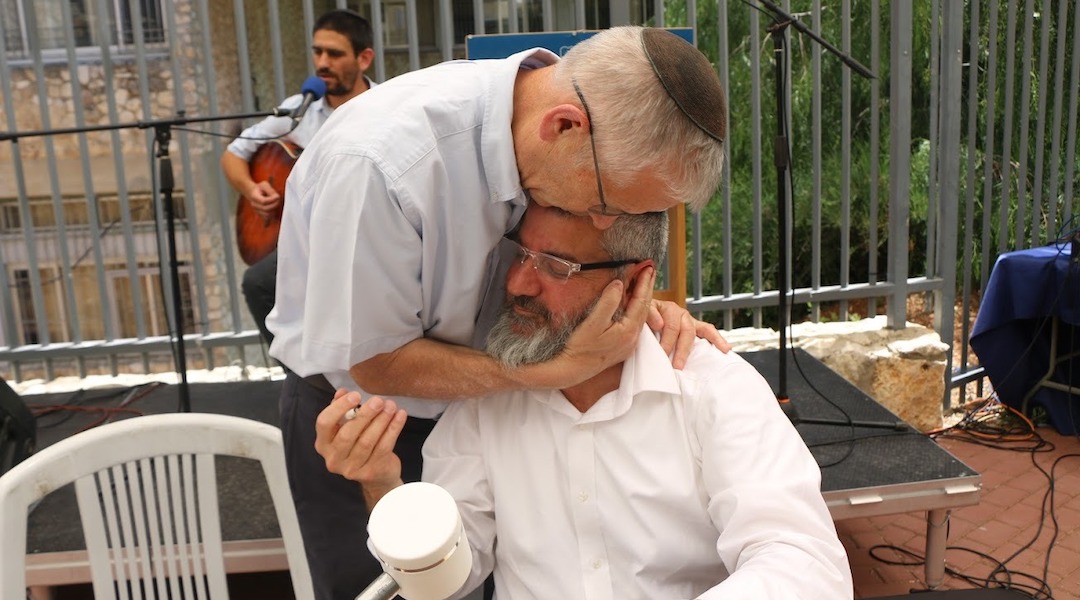
Rabbi Jeremy Stavisky hugs a teacher and scribe who wrote a Torah scroll in honor of the fallen alumni. (Courtesy of Himmelfarb)
Rabbi Jeremy “Yirmi” Stavisky, who served as principal for 23 years before stepping down four years ago to transition into a teaching role, said Goldberg’s death was also a devastating blow for other staff members, who shared deep friendships with him. Those bonds are also what help carry all of them through the grief. “Our role is not to replace the students’ homes but to give them another home,” he said.
Stavisky himself suffered a personal loss when his son-in-law, Yinon Fleishman, was killed at the start of the war.
But according to Stavisky, his successor, Rabbi Shlomo “Shlomi” Danino, is cautious not to let grief define the school.
“First and foremost, school is a place of life. A place of learning, of sports, of play and of personal growth. We’re very careful about that,” he said.
He points to a plaque honoring the memory of 60 fallen alumni, dating back to 1969. The plaque is in a modest corner of the school’s beit midrash, or Jewish study hall, and not in the main atrium.
Instead, the main hall is graced with a sign that reads, “In all your ways, know Him,” a phrase from Proverbs. For Rockman, the phrase encapsulates the school’s undaunted ethos.
“Of course they want you to stay religious but in the end, we are encouraged to find our own way.” He noted that while more than 99% of graduates enlist in the army, their paths vary widely after graduation. Some study in yeshivas before and during army service, while others conscript right away. Some remain religious, others do not.
One constant the school imbues is the emphasis on service, Stavisky said.
“A person cannot live for himself. A person always has to live to give meaning to his life and also has to see where he can contribute to the world,” he said. “This is a deeply ingrained value, and even if it’s not often explicitly discussed, students and alumni feel this expectation strongly.”
That extends to military service and risking one’s life, he said. “The school doesn’t preach joining the army or pursuing combat roles — it’s simply understood as an inherent civic and Jewish responsibility,” he said.
The school’s students, faculty and alumni know that that philosophy sometimes leads to grief. But Stavisky said faith and friendships have been a balm. Despite the sacrifice it may entail, they’re not ready to give up on religious Zionism.
“Deep recognition of our religious Zionist identity helps,” he said. “We believe in this story, the story of the people of Israel who returned to the land of Israel after 2,000 years.”
He added, “But if we want a state in the midst of the barbarity of the Middle East, we have to be prepared to defend it.”
JTA has documented Jewish history in real-time for over a century. Keep our journalism strong by joining us in supporting independent, award-winning reporting.
